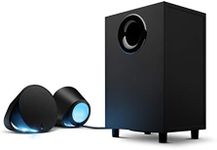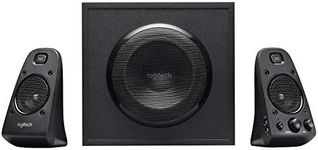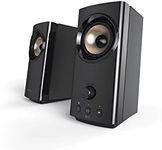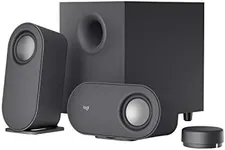Buying Guide for the Best budget PC speakers
Choosing the right PC speakers can make a big difference in your daily computer experience, whether you’re listening to music, watching movies, or playing games. When shopping for PC speakers, it’s important to think about how you plan to use them, the space you have available, and what kind of sound quality you expect. Understanding the key specifications will help you find a set that fits your needs and avoids disappointment.Speaker ConfigurationSpeaker configuration refers to the number and arrangement of speakers in the set, such as 2.0 (two speakers), 2.1 (two speakers and a subwoofer), or even 5.1 (five speakers and a subwoofer). This is important because it affects the sound experience: a 2.0 setup is compact and good for basic use, while a 2.1 adds deeper bass with a subwoofer, making it better for music and movies. Larger setups like 5.1 are more immersive but take up more space. To pick the right one, consider your desk space and what you’ll use the speakers for—if you want simple sound for web browsing, 2.0 is fine, but for richer audio, a 2.1 might be better.
Power Output (Wattage)Power output, measured in watts (W), tells you how loud and powerful the speakers can get. Higher wattage usually means louder sound and better performance at high volumes, but it’s not the only factor in sound quality. For small rooms or close-up listening, lower wattage (5-20W) is usually enough, while larger rooms or those who want to fill the space with sound might look for higher wattage (20-50W or more). Think about your room size and how loud you want your speakers to be when choosing the right power output.
Frequency ResponseFrequency response describes the range of sounds the speakers can produce, from low bass to high treble, usually shown as two numbers like 60Hz–20kHz. A wider range means the speakers can play deeper bass and higher treble, which is important for music and movies. For everyday use, most people are fine with a standard range, but if you care about deep bass or crisp highs, look for a wider frequency response. Your listening habits should guide you—if you love bass-heavy music, pay attention to the lower number.
Connectivity OptionsConnectivity options refer to how the speakers connect to your PC, such as through a 3.5mm audio jack, USB, Bluetooth, or even RCA. This is important because it affects compatibility and convenience. Wired connections like 3.5mm or USB are reliable and common, while Bluetooth allows for wireless use and more flexibility. Choose based on your PC’s available ports and whether you want the freedom to move your speakers or connect other devices.
Controls and FeaturesControls and features include things like volume knobs, bass/treble adjustment, headphone jacks, and sometimes even built-in lighting. These can make your speakers easier and more enjoyable to use. If you like to tweak your sound or want quick access to volume, look for speakers with accessible controls. Think about what features will make your daily use more comfortable and pick accordingly.
Size and DesignSize and design refer to the physical dimensions and appearance of the speakers. This matters because you need to fit them on your desk and you might want them to match your setup. Smaller speakers are easier to place but may have less powerful sound, while larger ones can offer better audio but take up more space. Consider your available space and personal style when choosing the right size and look.
















